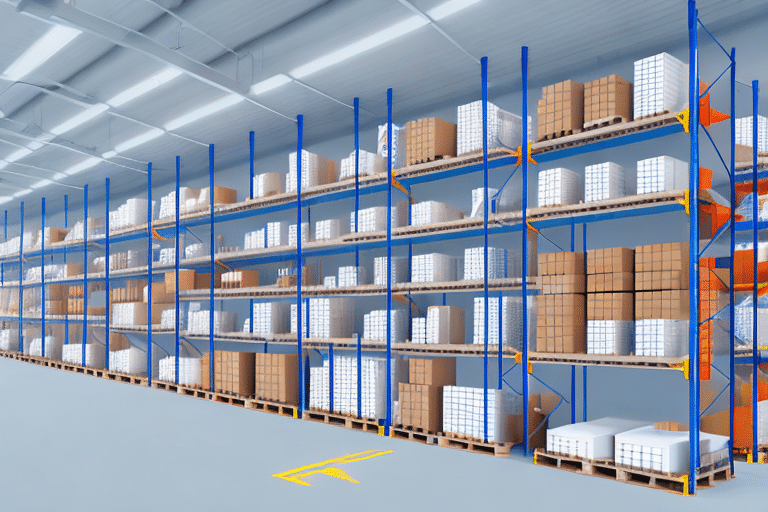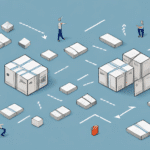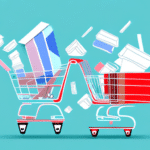Choosing the Right 3PL Fulfillment Warehouse Management and E-commerce Packing Services
For e-commerce business owners, efficient and reliable fulfillment is crucial for customer satisfaction and repeat sales. This is where a 3PL fulfillment warehouse plays a pivotal role. But what exactly is a 3PL fulfillment warehouse, and why is it essential for your business? In this article, we delve into everything you need to know about selecting the ideal 3PL fulfillment warehouse management and e-commerce packing services to enhance your operations.
Understanding 3PL Fulfillment Warehouses
A Third-Party Logistics (3PL) provider offers comprehensive logistics and supply chain management services to businesses. These providers manage warehousing, picking, packing, and shipping for e-commerce businesses, handling all aspects of order fulfillment so you can focus on your core operations.
Benefits of Using a 3PL Fulfillment Warehouse
- Scalability: Easily scale your operations up or down based on demand without the need for significant infrastructure investments.
- Cost Efficiency: Avoid the expenses associated with maintaining your own warehouse and logistics infrastructure.
- Multiple Locations: Strategically placed warehouses can reduce shipping times and costs, enhancing customer satisfaction.
- Access to Technology: Benefit from advanced warehouse management systems (WMS) that improve efficiency and accuracy.
According to a Statista report, the global 3PL market is expected to continue its growth trajectory, highlighting its increasing importance in the e-commerce sector.
Determining Your E-commerce Fulfillment Needs
Before selecting a 3PL fulfillment warehouse, it’s essential to assess your business’s specific needs. Consider the following factors:
- Order Volume: Estimate your average and peak order volumes to ensure the 3PL can handle your demands.
- Product Types: Assess the nature of your products, including size, weight, and any special handling requirements.
- Shipping Destinations: Determine whether you require domestic, international, or both types of shipping services.
- Special Requirements: Identify any additional services you might need, such as gift wrapping, kitting, or custom packaging.
Understanding these needs will help you choose a 3PL provider that aligns with your business objectives and customer expectations.
Key Factors to Consider When Choosing a 3PL Provider
Selecting the right 3PL fulfillment warehouse provider can significantly impact your business's efficiency and customer satisfaction. Here are the critical factors to consider:
Experience and Expertise
Choose a provider with proven experience in your industry and an understanding of your specific logistics needs. Experienced providers are better equipped to handle challenges and optimize your fulfillment processes.
Technology and Integration
The right Warehouse Management System (WMS) is essential for real-time inventory tracking, order management, and seamless integration with your e-commerce platform. Ensure the 3PL uses modern technology that can integrate smoothly with your existing systems.
Location and Network
Strategically located warehouses can reduce shipping times and costs. A 3PL with multiple locations across different regions or countries can help you reach your customers more efficiently.
Customer Service
Excellent customer service is crucial for effective communication and quick resolution of any issues. Look for a provider with a dedicated customer support team and easy-to-access contact channels.
Scalability and Flexibility
Your business needs may change over time. Choose a 3PL provider that can adapt to your evolving requirements, whether it’s scaling operations during peak seasons or adjusting services as your product line expands.
Security and Compliance
Ensure the 3PL provider has robust security measures in place to protect your inventory. Additionally, they should comply with all relevant industry regulations and standards to avoid any legal complications.
The Importance of Warehouse Location
The location of a 3PL fulfillment warehouse plays a critical role in your shipping strategy. Here’s why it matters:
Proximity to Customers
Warehouses located near your primary customer base can significantly reduce shipping times and costs. This proximity enhances customer satisfaction by ensuring faster deliveries.
Access to Transportation Hubs
Being near major transportation hubs like airports, seaports, and highways facilitates quicker and more reliable shipping options, both domestically and internationally.
Risk Mitigation
Choosing multiple warehouse locations can help mitigate risks associated with natural disasters, political instability, or other disruptions in a single region.
Cost Considerations in 3PL Fulfillment Services
Understanding the cost structure of 3PL providers is essential for making an informed decision. Key cost factors include:
- Storage Fees: Charges based on the amount of space your inventory occupies.
- Fulfillment Fees: Costs associated with picking, packing, and shipping orders.
- Shipping Costs: Fees for transporting goods to your customers, which may include discounts based on the provider's shipping rates.
- Add-on Services: Extra charges for services like returns processing, custom packaging, or kitting.
It’s important to request a detailed breakdown of all costs and understand any potential hidden fees. Evaluating the cost-benefit of outsourcing fulfillment versus handling it in-house will help you make the most economical choice.
Cost-Efficiency Through Economies of Scale
3PL providers often operate at a larger scale, allowing them to negotiate better shipping rates and pass those savings on to you. This can result in significant cost reductions compared to managing fulfillment internally.
Technological Advancements in 3PL Fulfillment
Technology is revolutionizing the 3PL fulfillment landscape. Here are some key advancements:
Automation and Robotics
Automation technologies, including robotics, streamline warehouse operations by speeding up picking and packing processes, reducing errors, and lowering labor costs.
Real-Time Inventory Management
Advanced warehouse management systems (WMS) provide real-time insights into inventory levels, enabling better demand forecasting and inventory optimization.
Integration with E-commerce Platforms
Seamless integration with platforms like Shopify, WooCommerce, and Magento ensures smooth data flow between your online store and the 3PL provider, enhancing order accuracy and fulfillment speed.
Data Analytics
Data analytics tools help 3PL providers and businesses alike to analyze performance metrics, identify trends, and make informed decisions to improve efficiency and customer satisfaction.
According to a McKinsey report, companies leveraging advanced technologies in their logistics operations are better positioned to meet the evolving demands of today's consumers.
Best Practices for Inventory Management in 3PL Warehouses
Effective inventory management is vital for maintaining optimal stock levels and ensuring timely fulfillment. Here are some best practices:
- Regular Audits: Conduct periodic inventory audits to verify stock accuracy and identify discrepancies.
- Demand Forecasting: Utilize historical sales data and market trends to predict future demand and adjust inventory levels accordingly.
- Real-Time Tracking: Implement systems that provide real-time visibility into inventory status, enabling prompt restocking and minimizing stockouts.
- Effective Communication: Maintain clear and consistent communication with your 3PL provider to ensure they are aware of any changes in inventory or demand.
Prioritizing high-demand products and implementing automated reordering systems can further enhance inventory management efficiency.
Enhancing Customer Service Through 3PL Fulfillment
Customer service is a critical component of e-commerce success. A reliable 3PL fulfillment provider can enhance your customer service in several ways:
- Faster Delivery Times: Efficient fulfillment processes result in quicker delivery, improving customer satisfaction.
- Accurate Order Fulfillment: Minimizing errors in orders reduces returns and enhances the customer experience.
- Proactive Communication: Real-time tracking and timely updates keep customers informed about their order status.
- Efficient Returns Processing: Quick and hassle-free returns handling contributes to a positive customer relationship.
Partnering with a 3PL provider that shares your commitment to excellent customer service can significantly boost your brand reputation and customer loyalty.
Avoiding Common Mistakes When Selecting a 3PL Provider
Choosing the wrong 3PL fulfillment warehouse can lead to increased costs, operational inefficiencies, and customer dissatisfaction. Here are common mistakes to avoid:
- Insufficient Research: Failing to thoroughly research and evaluate potential providers can result in selecting a partner that doesn't meet your needs.
- Ignoring Technology Compatibility: Ensure the 3PL provider’s technology systems can integrate seamlessly with your e-commerce platforms and other business tools.
- Overlooking Location: Choosing a provider without considering the strategic location of their warehouses can lead to higher shipping costs and longer delivery times.
- Focusing Solely on Cost: While cost is important, prioritizing price over quality and reliability can compromise your fulfillment operations.
By avoiding these pitfalls and conducting a comprehensive evaluation, you can select a 3PL provider that aligns with your business goals and enhances your operational efficiency.
Case Studies: Successful E-commerce Brands Leveraging 3PL Fulfillment Warehouses
Many successful e-commerce brands have partnered with 3PL fulfillment warehouses to streamline their operations and drive growth. Here are a few examples:
1. Harry’s
Harry’s, a men’s shaving and grooming company, utilizes a 3PL fulfillment warehouse to manage their order fulfillment. This partnership allows them to focus on marketing and product development while ensuring timely and accurate deliveries to their customers.
2. Minted
Minted, an online marketplace for independent artists, relies on a 3PL fulfillment provider to handle their printing and shipping needs. This collaboration frees up their internal team to concentrate on customer service and expanding their marketplace offerings.
3. Etsy
Etsy, a global online marketplace for handmade and vintage goods, offers 3PL fulfillment services to its sellers through partnerships with third-party providers. This enables individual sellers to offer faster shipping options and better customer service without managing their own logistics.
These case studies demonstrate how partnering with a reputable 3PL fulfillment warehouse can enhance operational efficiency, reduce costs, and improve customer satisfaction, ultimately contributing to business growth.
Conclusion
Selecting the right 3PL fulfillment warehouse provider is a critical decision for any e-commerce business looking to optimize its supply chain and enhance customer satisfaction. By understanding your fulfillment needs, evaluating key factors such as experience, technology, and location, and avoiding common pitfalls, you can choose a partner that aligns with your business goals and drives success.
Embracing technological advancements and adhering to best practices in inventory management and customer service will further solidify your position in the competitive e-commerce landscape. Partner with a reliable 3PL provider to gain a competitive edge, reduce operational costs, and focus on what you do best—growing your business.






















